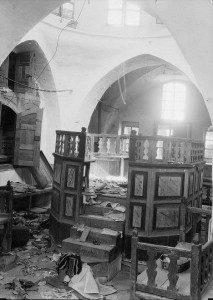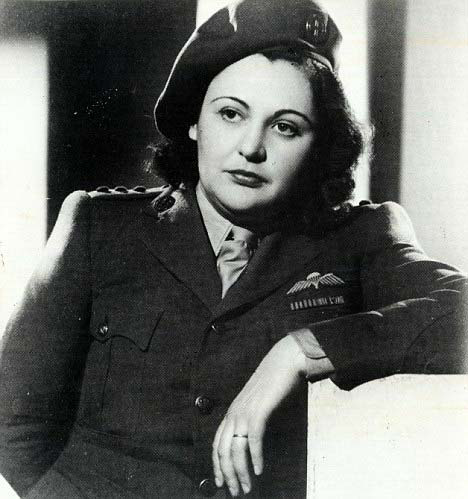 WHILE the story of the special team of operators I named The Virtues is entirely fictional, set in a fictional town, and comprised of fictional characters who form a fictional military division, every single one of my fictional heavenly heroines was inspired by a real World War II heroine and the story was inspired by real events.
WHILE the story of the special team of operators I named The Virtues is entirely fictional, set in a fictional town, and comprised of fictional characters who form a fictional military division, every single one of my fictional heavenly heroines was inspired by a real World War II heroine and the story was inspired by real events.
Today, Grace’s Ground War IS FREE. Yes! FREE. You can get it in ebook form at this link.
Here are the amazing stories that inspired the writing of Grace’s Ground War, Part 5 of the Virtues and Valor Serialized Story.

The girl on the cover of this book carrying the M1916 Spanish Mauser is a derivative image of the now iconic photograph of 17 year old Marina Ginestà. The original photograph was snapped on July 21, 1936 by Juan Guzman, who was born Hans Gutmann in Germany before moving to Spain. In the original photograph, Marina stands overlooking Barcelona from the rooftop of the Hotel Colón during the outset of the Spanish Civil War. At the time, she worked as a translator for a Soviet journalist of Pravda. She was a member of Juventudes Socialistas Unificadas (Socialist Youth), the youth organization mainly directed by Partido Comunista de España (PCE, Communist Party of Spain).
Despite her early involvement, Marina quickly realized she had been duped by the Stalinists and left the Soviet movement, joining up with the anti-Stalinist P.O.U.M – alongside such notables as George Orwell – and contributing as a militant soldier and journalist for several Republican media outlets in the struggle against Communism, Fascism, and Franco for the duration of the conflict.
Marina did not even know about the photo until 2006, although the image was printed, reprinted, and circulated everywhere and has become symbolic of the conflict and even of that time in history. Marina Ginestà died January 6, 2014 in Paris, at the age of 94.
The prologue of this book is set in Hebron immediately after the massacre that took place there in the late 1920s. While the Aubertins are fictional characters, the bloodshed there was all too real.

Synagogue, Hebron 1929 — Photo source
In August 1929, in an ominous prelude to the coming Nazi propaganda against the Jews in Europe, a radical Islamic faction of jihadists carrying out a fatwa against the Jews living in (then) British Palestine engaged in Taqiyya, which is to say they lied, deliberately deceived, and spread false rumors against the Jews. This organized campaign of deception spread throughout British Palestine with the intent of inciting violence against the Jewish population. The rumors claimed that Jews were massacring Arabs in Jerusalem and seizing control of Muslim holy places.
On August 24, 1929, the Hebron Massacre began. Hebron is a city south of Jerusalem and is Biblically the burial place of Abraham, Sarah, Isaac, Rebekah, Jacob, and Leah. After only 3 days, 67 Jews were killed, and many more were seriously injured or maimed. Homes and synagogues were pillaged and destroyed. Throughout British Palestine, 133 Jews and 110 Arabs were killed.
The British authorities relocated the 435 surviving Jews from Hebron to Jerusalem in an attempt to protect them. The massacres of the Jews in Hebron and in Safed led to the re-organization and development of the Jewish paramilitary organization, the Haganah, which later became the nucleus of the Israel Defense Forces.
The character of Ruth Aubertin, code-named Grace, was inspired by none other than “The White Mouse,” better known as Nancy Grace Wake.

Nancy Grace Wake, aka: “The White Mouse”
An Australian by birth, Nancy left her native soil in her early twenties on a world tour, supporting herself with freelance journalism. She met Henri Fiocca, one of the wealthiest men in Marseille, France, at a party one evening and the two fell deeply and madly in love.
They married in 1939. Henri spoiled his beloved bride with a luxurious lifestyle she had never even imagined. When Henri prepared to go to war, Nancy said she wanted to go, too. He asked her what she could do, and she replied, “Drive an ambulance.”
“But you can’t drive,” he’d reasoned.
“You must have me taught,” she’d insisted.
Never one to deny her anything, he had one of the mechanics who worked for him teach her. She drove an ambulance back and forth from Belgium to Paris, transporting refugees, wounded soldiers, and civilians needing to escape the oncoming Nazi front. When Paris fell to the Germans, she knew she also had to leave or be arrested. She drove her truck until it broke down, then walked and hitchhiked the rest of the way back home to Marseille where her husband, a defeated French soldier from the front lines, met her.
With half of France under Hitler’s boot heel, their area of Southern France fell under Vichy rule. However, the Führer could snatch it up at any time because the Vichy government collaborated with – and capitulated to – Berlin. While the Fioccas resumed what sense of a “normal” life they could manage, Nancy used their wealth to hoard as much canned food as possible, then started stockpiling black market soaps, cigarettes, and meat, all of which she generously shared with those in need.
Many British troops held as prisoners of war at Fort St. Jean had “parole” that allowed them to come into the town. Over time, Nancy and Henri became hosts to them. They fed them in their home, provided them with soap and cigarettes, and eventually with money. Their home became a planning center for the POWs at Fort St. Jean to escape back to Britain. Soon, she began traveling, delivering messages from the POWs to contacts in other towns. Eventually, she began making deliveries for the French Resistance as a trusted courier.
Because they lived across the street from the Vichy Commissaire, who had begun watching them closely, Nancy and Henri eventually rented a flat that they kept stocked with food where those planning illegal activities could meet.
In November 1942, the Germans marched into unoccupied France. By now, the Germans knew that a woman they assumed was a French (though Nancy was not French) traveled and transported so much information, but they did not know her name so they dubbed her “The White Mouse.”
One time, she and four men working with the Resistance rode a train. She carried a suitcase filled with a butchered black market pig. She ended up sharing a train compartment with a Gestapo agent who was actually on the train trying to capture “The White Mouse”. She charmed him into carrying her suitcase for her, which breezed her through the customs checkpoint, and then made it safely away.
Eventually, she knew she had fallen under suspicion and that the Gestapo watched her. She and her husband made plans for her to return to Great Britain using the very underground she’d helped for years.
While making her escape, the Gestapo stopped her train and arrested everyone on board. En route to the prison, the trucks that transported the prisoners got stuck in traffic. Nancy and several others rushed out of the trucks and ran away. However, the arresting officers found her and took her to jail. There, she found out that the Gestapo in her own town denied knowing her existence, and the Gestapo in another town claimed her as a well-known prostitute. She then realized that they had framed her for blowing up a movie theater in another town. They spent days beating her and questioning her, trying to get her to admit to a crime she did not commit, or to admit to those who helped her. Enduring days of continual beatings, she said nothing.
Finally, the contact named O’Leary, who had planned to help get her out of France, arrived at the prison and used a ruse and false papers to secure her release. They tried to escape to Spain five times. On the sixth attempt, they had 10 escaped prisoners with them and, while they rode the train, a railway official came to their compartment and warned them that the Germans planned to stop the train ahead. As the train slowed, Nancy, O’Leary, and the prisoners jumped out the windows. Under heavy machine gun fire, Nancy ran through a field and up the side of a mountain, where she and the men who successfully escaped, hid for two days.
O’Leary went to meet a contact and got arrested. Nancy and the others disbanded, and she and a few of them made it to Nice, where Nancy hid in the home of an enemy of the Reich, Madame Sainson. She had sheltered many wanted men and women, and had teenaged children who also acted as couriers. Nancy stayed there for three weeks, until she could acquire new papers and travel to Perpignan, where she found one of O’Leary’s contacts and convinced him to take her to Spain.
She and a group walked for three hours that night and at dawn, rode in the back of a coal truck. After going as far as the “lorry” could take them, they met up with two guides who marched them for 47 hours to Spain, walking across the mountains, through blizzards, and fighting hunger and thirst. No sooner had they arrived in Spain than she and her group of 6 were arrested. For three days they were given no food or water and endured miserable conditions in a cell with 17 other people. On the third day, the police took her out of the cell and shackled her to a chair and questioned her. She did not speak Spanish and did not answer any of their questions. They fed the bunch, then took them by bus to Gerona, where they were charged with illegal entry of the country. The judge was bribed £1,000 to let them free, and Nancy made it to Barcelona. Ten days later, she left for Great Britain.
After two months in London, it occurred to her that her husband would not be following her out of France, so she contacted Free French Headquarters and volunteered her services. Because she wasn’t French, they didn’t trust that she wasn’t a British spy. In short order, she went to the British Special Operations Executive, or S.O.E.. After several weeks of training, she parachuted (wearing high heels!) back into France almost a year after the beginning of her escape. She worked as a liaison between London and the local maquis group headed by Captain Henri Tardivat in the Forest of Tronçais. She worked on securing arms and equipment that came in via parachute. She recruited members until the maquis groups grew into a formidable force of 7,500 strong. She also led attacks on German installations and the local Gestapo headquarters in Montluçon.
Nancy worked ruthlessly against the Nazis, at one point executing a female Nazi spy who the men in her unit did not have the “heart” to kill. Another time she killed a male sentry with her bare hands to keep him from sounding an alarm. During an interview in the 1990’s, the interviewer asked Nancy about killing the sentry. She drew her finger across her throat in a slicing motion and said, “They’d taught this judo-chop stuff with the flat of the hand at SOE, and I practiced away at it. But this was the only time I used it – whack – and it killed him all right. I was really surprised.”
At the end of the war, Nancy looked forward to being reunited with her beloved husband. It was only then that she discovered that the Gestapo had captured Henri and questioned him about Nancy’s whereabouts. Through the days and nights of endless torture, Henri never betrayed her. He never gave her up. They eventually tortured him to death.
For her service and sacrifice, Nancy received the George Medal, the United States Medal of Freedom, the Médaille de la Résistance, and the Croix de Guerre three times. Nancy was also appointed a Chevalier of the Legion of Honour in 1970 and received a promotion to Officer of the Legion of Honour in 1988.
In February 2004, Nancy received the Companion of the Order of Australia. In April 2006, she was awarded the Royal New Zealand Returned and Services’ Association’s highest honor, the RSA Badge in Gold.
After the war, she worked for the Intelligence Department at the British Air Ministry attached to embassies in both Paris and Prague. She eventually became very active in Australian and British politics. In 1957, Nancy remarried, this time to a British RAF officer named John Forward. The couple lived in Australia until his death in 1997.
In 2001, Nancy returned to London, where she lived until her 98th year. Nancy Grace Wake died in August of 2011. The New York Times used her death to inspire the title and included her obituary in the book The Socialite who Killed a Nazi with Her Bare Hands: And 144 Other Fascinating People who Died this Year.
WHILE the story of the special team of operators I named The Virtues is entirely fictional, set in a fictional town, and comprised of fictional characters who form a fictional military division, every single one of my fictional heavenly heroines was inspired by a real World War II heroine and the story was inspired by real events.
Grace’s Ground War IS FREE today through November 9th. Yes! FREE. You can get it in ebook form at this link.



